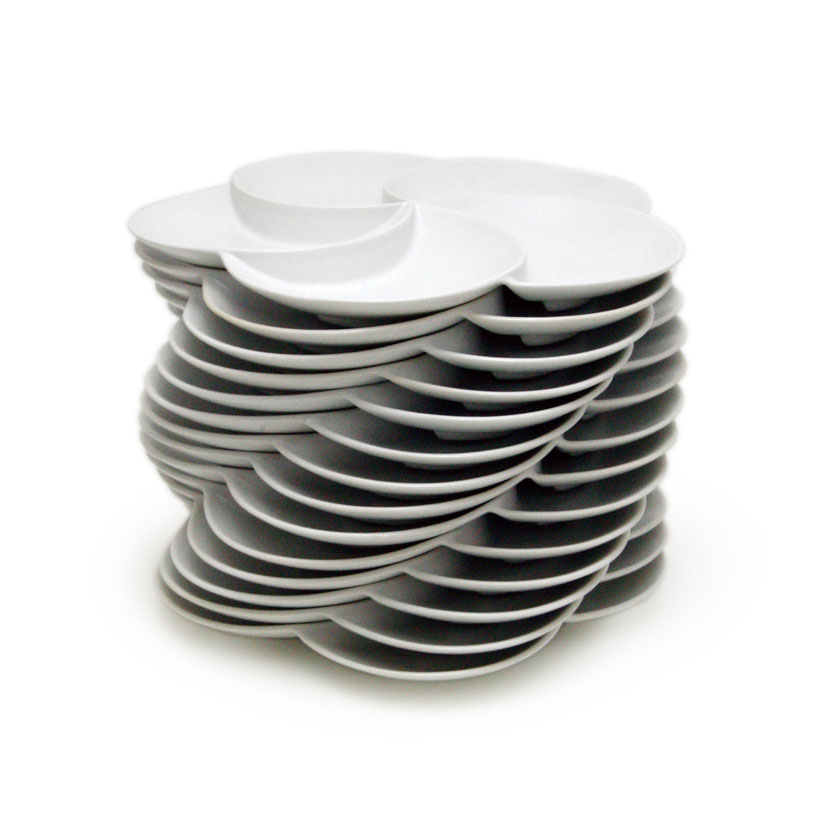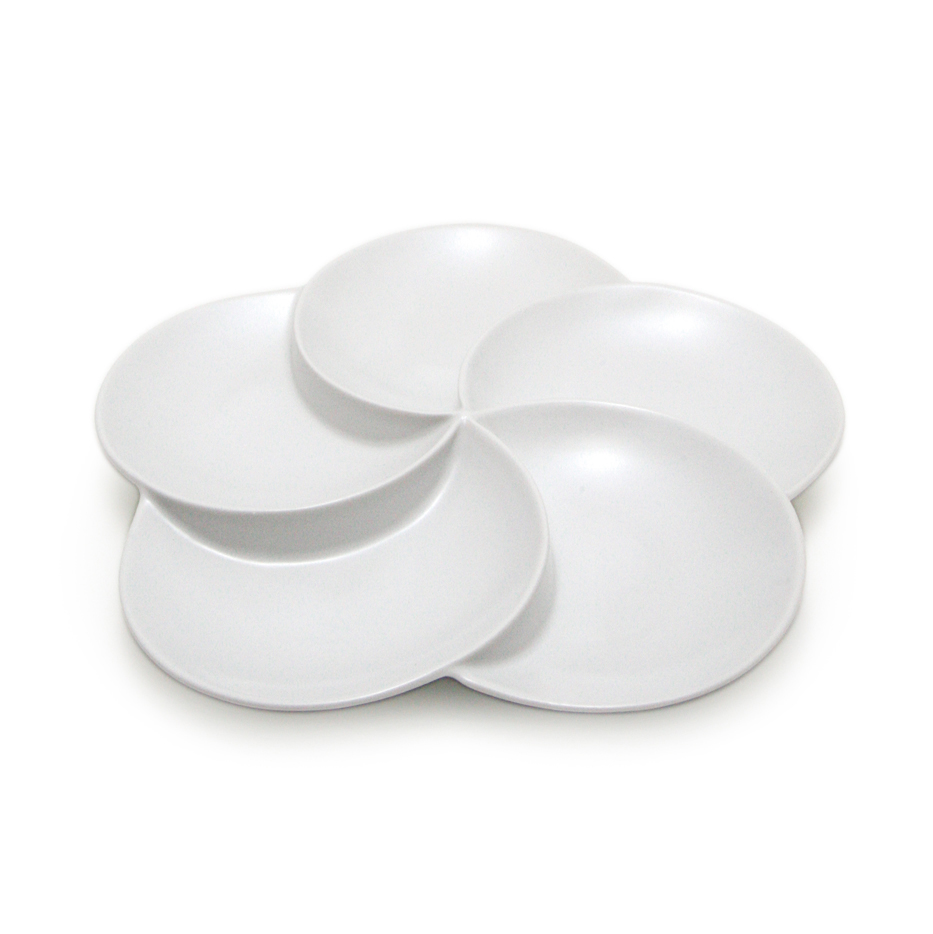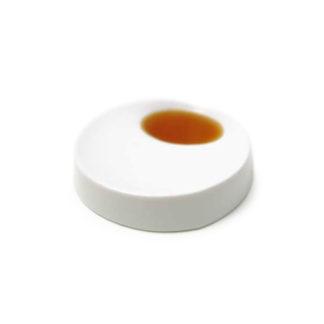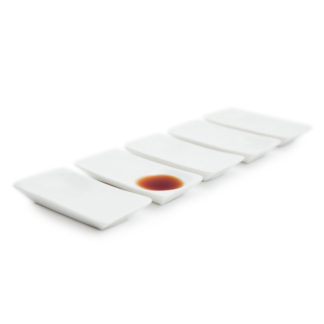Five Senses Plate “Gokanzara”
¥3,520
Out of stock
I came up with the idea for these plates for an organic restaurant, which was founded on the concept of the five senses (please see ReBrand)
Gokanzara (which translates to “plate of the five senses”) certainly draws its inspiration from the fact that the mealtime is the only time when you make use of all five senses at once. But it also draws inspiration from the fact that the number five figures significantly in the world of Japanese dining. For instance, there are a total of five basic spices and flavorings that make up the essence of Japanese cuisine. Additionally, Japanese dining, which is certainly a rarity in the world, supposedly requires five materials to be arranged for one person: glass, wood, porcelain, ceramics, and metal.
The Gokanzara has practical aspects to it as well. Upon observing that diners at restaurants in Japan are generally supposed to have their serving plates changed four times in the course of a full-course meal so as to avoid mixing sauces and seasonings, I wished to reduce the workload of the waiters and waitresses who had to keep replacing these plates. With the Gokanzara, all they have to do now is set a single plate per person before the entrees are served. These special plates also make dishwashing less burdensome, and what’s more, they double as beautiful art objects, which you can put on display by stacking them in the kitchen, where storage space is usually limited in Japan. While the special design of the Gokanzara is all the more important in Japan because it is an earthquake-prone country, this design still remains a completely neglected challenge in the tableware field.
AWARDS:
2005 How magazine design award(logo design Category)
http://www.howdesign.com/GeneralMenu
2005 ReBrand design award
http://www.rebrand.com/2006-merit-jinen-saboh
| Weight | 385 g |
|---|---|
| Dimensions | 225 x 225 x 25 cm |




